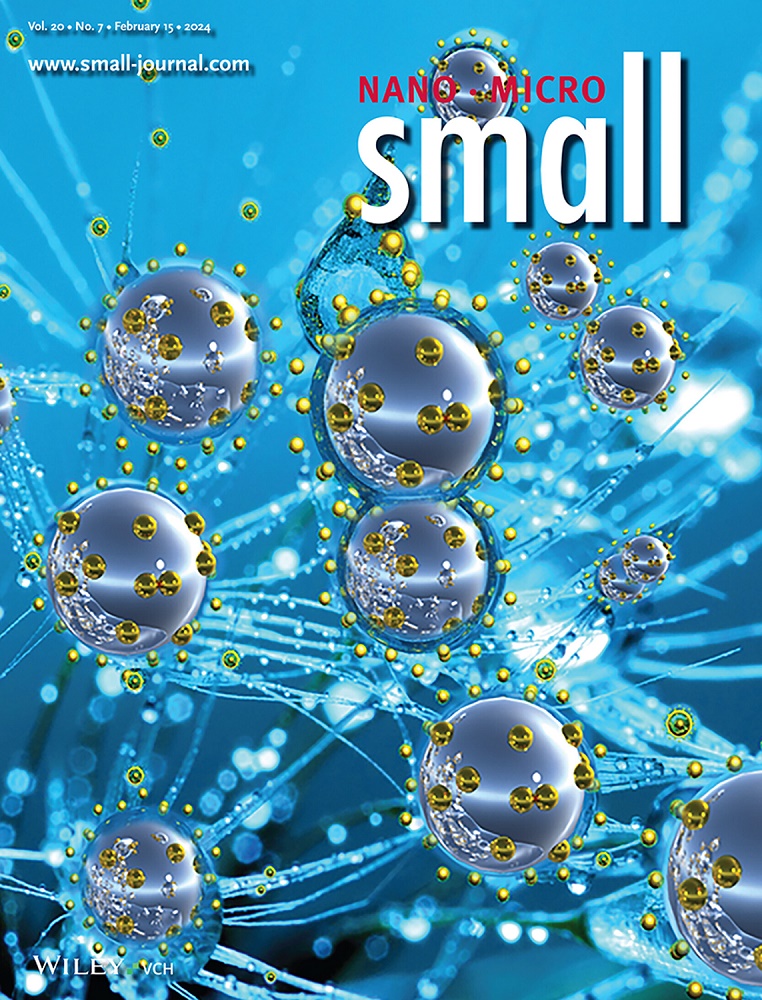Electrocatalytic Oxidation on CuO‐CoMOF for Biomass‐Derived Glucose Integrated with Green Hydrogen Generation
IF 12.1
2区 材料科学
Q1 CHEMISTRY, MULTIDISCIPLINARY
引用次数: 0
Abstract
Electrocatalytic of biomass‐derived glucose into formic acid integrated with hydrogen generation represents a highly advantageous strategy for sustainable biomass utilization and carbon neutrality, but is frequently hindered by high energy demands and suboptimal conversion efficiency. Herein, a CuO‐CoMOF/NF catalyst is reported, comprising a rough nanorod array CuO grown on nickel foam (NF) and decorated with Co‐Metal‐Organic Framework (Co‐MOF), which demonstrates extraordinary performance and stability at a low potential of 1.45 V (vs RHE), achieving a Faradaic efficiency (FE) of 98.5% and a formic acid production rate of 1.4 mmol cmCuO - CoMOF电催化氧化生物质衍生葡萄糖与绿色制氢
生物质衍生葡萄糖的电催化转化为甲酸并结合制氢是一种非常有利的可持续生物质利用和碳中和策略,但经常受到高能量需求和次优转化效率的阻碍。本文报道了一种CuO - CoMOF/NF催化剂,该催化剂由生长在泡沫镍(NF)上的粗糙纳米棒阵列CuO组成,并以Co -金属-有机骨架(Co - MOF)装饰,在1.45 V (vs RHE)的低电位下表现出非凡的性能和稳定性,法拉第效率(FE)达到98.5%,甲酸产率为1.4 mmol cm−2 h−1,显著优于CuO/NF催化剂。优异的性能主要归功于催化剂表面瞬间形成CoOOH活性物质,通过自发化学反应协同促进葡萄糖的快速消耗,增强电荷转移,优化催化剂的吸附行为。值得注意的是,在电流密度为10 mA cm−2时,双电极电解槽所需的电压比传统的整体水分解所需的电压低494 mV。该研究为合理设计电催化剂,有效地将生物质衍生醇转化为增值化学品,同时产生氢气提供了新的视角。
本文章由计算机程序翻译,如有差异,请以英文原文为准。
求助全文
约1分钟内获得全文
求助全文
来源期刊

Small
工程技术-材料科学:综合
CiteScore
17.70
自引率
3.80%
发文量
1830
审稿时长
2.1 months
期刊介绍:
Small serves as an exceptional platform for both experimental and theoretical studies in fundamental and applied interdisciplinary research at the nano- and microscale. The journal offers a compelling mix of peer-reviewed Research Articles, Reviews, Perspectives, and Comments.
With a remarkable 2022 Journal Impact Factor of 13.3 (Journal Citation Reports from Clarivate Analytics, 2023), Small remains among the top multidisciplinary journals, covering a wide range of topics at the interface of materials science, chemistry, physics, engineering, medicine, and biology.
Small's readership includes biochemists, biologists, biomedical scientists, chemists, engineers, information technologists, materials scientists, physicists, and theoreticians alike.
 求助内容:
求助内容: 应助结果提醒方式:
应助结果提醒方式:


